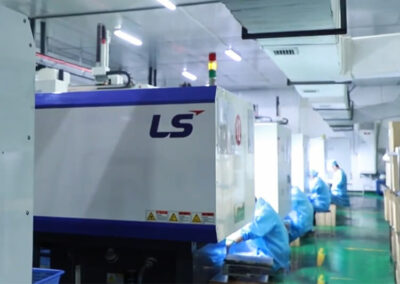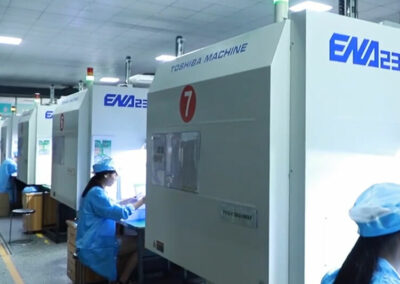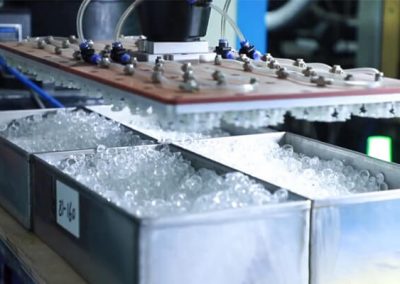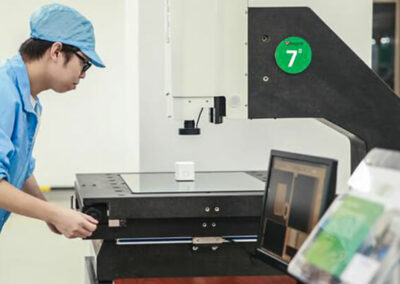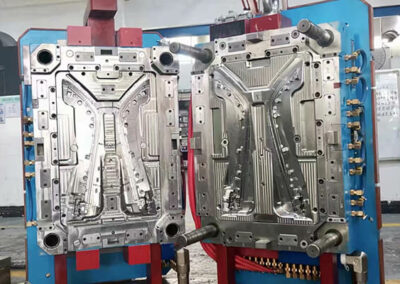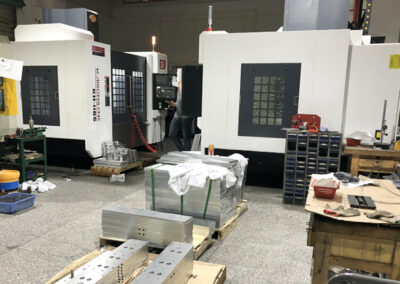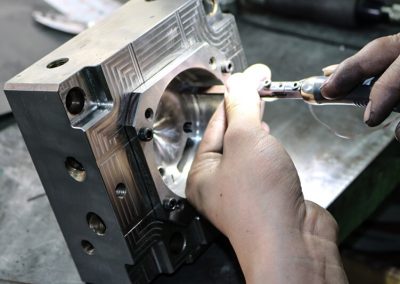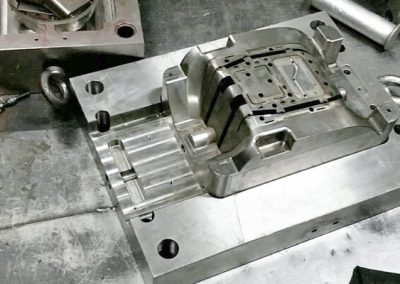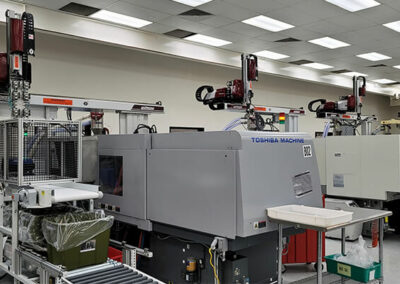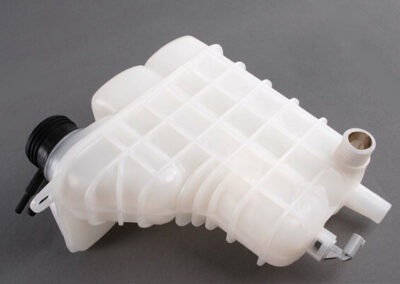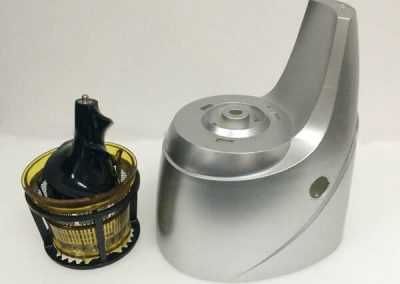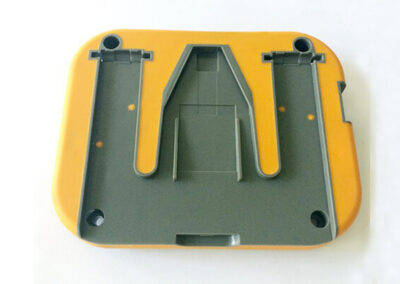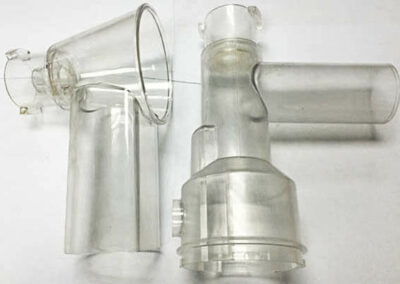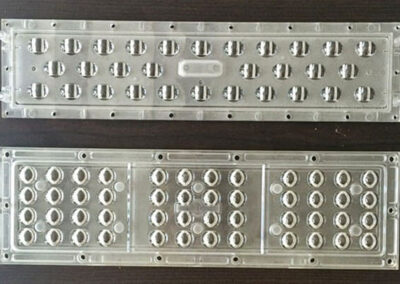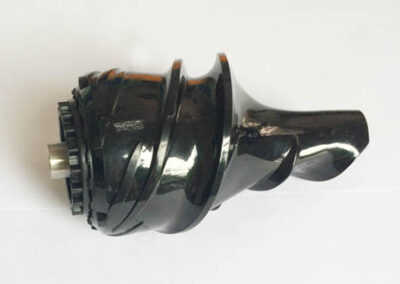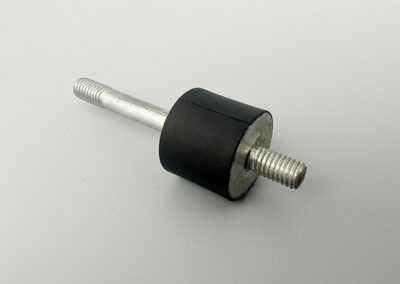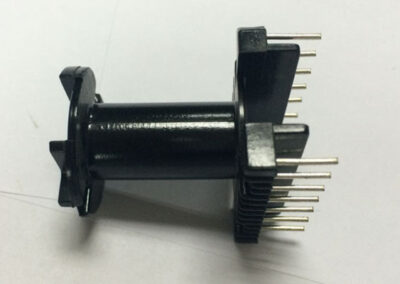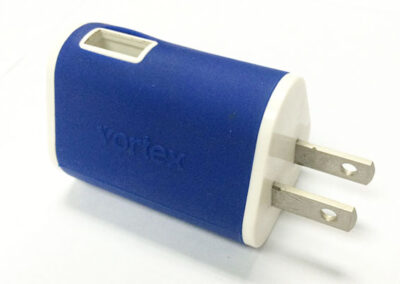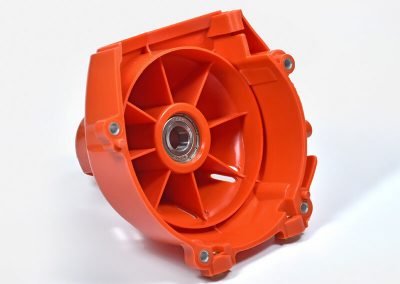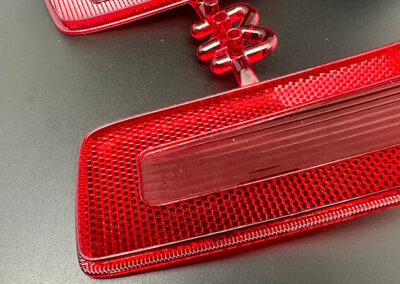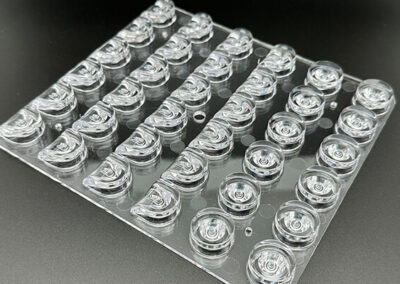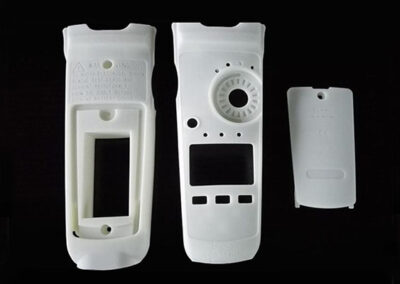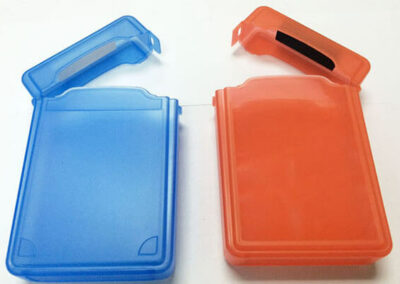Chinese Molding Services:
Custom Molded Parts And Molds Manufacturing
China has a large population and its manufacturing industry is growing fast. China has made significant investments in cutting-edge molding technology, such as the use of automation, robots, and digitalization in Chinese molding processes, all of which increase precision, decrease waste, and boost production efficiency.
Chinese molding manufacturers are committed to building trust with foreign clients and focused on reaching international quality requirements and certifications to compete on a global scale. High-precision molding processes have advanced significantly in response to the demand for smaller and more complex components. In addition, China’s injection molding sector is expanding its capacity to swiftly swap production lines and update production flow to handle both large production and small-batch, even individualized orders, in response to consumer demand for customized items.
If you are interested in Chinese molding, please learn more below. Sungplastic is a Chinese molding service provider, and contact us for this service. We have advanced injection molding machines, skilled injection molding technicians, and an excellent business team to ensure that our customers get perfect products.
What is Molding?
Molding, in a general sense, refers to the process of shaping or forming a material into a specific shape or design. It is a manufacturing technique used in various industries to create objects with desired shapes and dimensions. The choice of material and molding method depends on the intended applications for industrial and functional components.
Molding plays a crucial role in manufacturing and design, allows for the efficient and precise production of a wide range of objects and products with diverse shapes and functionalities.
Materials for Molding
Chinese molding can involve a wide range of materials, including plastics, metals, rubber, and composite materials. Choosing materials need to consider applications of finished products, material properties, production volume and so on.
Plastics
Injection molding, blow molding, and thermoforming are common methods for shaping plastic materials into products like bottles, automotive parts, and consumer goods. Such as:
- Polyethylene (PE)
Lightweight, Good chemical resistance
Used for bottles and plastic bags - Polypropylene (PP)
High tensile strength, Heat-resistant
Used for automotive parts and packaging - Polyvinyl Chloride (PVC)
Durable, Resistant to moisture
Used for pipes and electrical insulation
Metals
Metal casting techniques, such as sand casting and investment casting, are used to create metal parts and components for machinery, jewelry, and more. Such as:
- Aluminum
Lightweight, Corrosion-resistant
Used for aircraft parts and beverage cans - Steel
High strength, Durable
Used for construction beams and automotive components - Copper
Excellent electrical conductivity, Malleable
Used for electrical wiring and plumbing
Rubber
Rubber molding processes like compression molding and injection molding are used for creating rubber seals, gaskets, and various rubber products. Such as:
- Natural Rubber
High elasticity, Resilient
Used for tires and seals - Synthetic Rubber (e.g., Neoprene)
Oil and weather-resistant, Flexible
Used for wetsuits and gaskets
Composite Materials
Chinese molding is also used for composites, combining materials like fiberglass and epoxy to create strong and lightweight structures in industries such as aerospace and marine. Such as:
- Fiberglass Reinforced Plastic (FRP)
Lightweight, High strength-to-weight ratio
Used for boat hulls and automotive body parts - Carbon Fiber Composite
Extremely lightweight, Exceptional strength
Used for aircraft components and sports equipment

Chinese Molding Techniques
Chinese molding techniques are fundamental processes in manufacturing that involve shaping various materials to create objects, components, and products with specific designs and functionalities. These Chinese molding techniques are essential in a wide range of industries, from automotive and aerospace to consumer goods and art.
Chinese molding methods vary widely depending on the material and intended outcome. Some common Chinese molding techniques include casting, shaping with molds, extrusion. The choice of Chinese molding method also depends on factors like the complexity of the design, the material’s properties, production volume, and cost considerations.
Metal Molding
Metal molding, including methods like sand casting and investment casting, involves melting and pouring molten metal into molds. Once the metal solidifies, the desired shape is achieved.
Metals involved aluminum, steel, and bronze and so on.
Commonly used in automotive manufacturing, aerospace, jewelry, and sculpture.
Ideal for producing complex metal parts and components.
Injection Molding
China injection molding uses heat and pressure to inject molten plastic material into a mold cavity, where it cools and solidifies.
Materials involved various thermoplastics.
Widely used in the production of plastic parts, such as automotive components, toys, and consumer electronics.
Suitable for high-volume production of precise and intricate plastic components.
Overmolding and Insert Molding
Overmolding and insert molding combines multiple materials in a single mold, typically bonding a soft material to a rigid substrate.
Materials involved various plastics, rubber, and metals.
Commonly used in the manufacturing of grips on tools, toothbrushes, and electronic devices.
Suitable for enhancing comfort and functionality by combining different materials.
3D Printing (Additive Manufacturing)
3D printing builds objects layer by layer from digital designs, eliminating the need for molds.
Materials involved various materials, including plastics, metals, ceramics, and even food.
Commonly used for rapid prototyping, custom parts production, and medical implants.
Suitable for prototyping and small-batch production of highly customized objects.
Compression Molding
Compression molding involves placing a preheated material into a mold cavity and applying pressure to compress and shape it.
Materials involved thermosetting plastics and rubber.
Used for producing items like rubber seals, electrical components, and composite parts.
Suitable for high-strength and heat-resistant applications.
Blow Molding
Blow molding shapes hollow objects by inflating a heated plastic parison inside a mold cavity.
Materials involved plastics like HDPE and PET.
Commonly used for manufacturing bottles, containers, and automotive components.
Suitable for production of hollow, lightweight objects with consistent wall thickness.
Rotational Molding
Rotational molding uses rotation to evenly distribute a material, typically plastic, within a hollow mold, resulting in a uniform coating.
Materials involved plastics like polyethylene and polypropylene.
Commonly used for Producing large, hollow objects such as tanks, playground equipment, and kayaks.
Suitable for creating seamless, one-piece products with minimal material waste.
Thermoforming
Thermoforming heats a plastic sheet and forms it over a mold through pressure or vacuum.
Materials involved thermoplastics like ABS and PVC.
Commonly used for producing packaging, trays, and disposable products.
Suitable for economical production of shallow to moderately deep parts with large surface areas.
Resin Casting
Resin casting involves pouring liquid resin into a mold and allowing it to harden.
Materials involved various resins, such as epoxy and polyurethane.
Commonly used for prototyping, model making, and crafting.
Suitable for creating detailed, small-scale replicas and prototypes.
Foam Molding
Foam molding produces foam products by expanding and shaping foam materials within a mold.
Materials Involved: Foam materials like polystyrene and polyurethane.
Commonly used for manufacturing foam packaging, insulation, and cushions.
Suitable for producing lightweight and insulating products.
Hybrid Molding
Hybrid molding combines multiple molding techniques or materials to achieve specific design and performance characteristics.
Materials involved a combination of plastics, metals, or other materials.
Customized solutions for complex applications, such as automotive parts with metal-reinforced plastics.
Suitable for tailoring materials and processes to meet unique requirements.
Molds Fabrication
Molds fabrication involves creating precise molds that define the shape and features of the final product.
Materials involved typically metals like steel or aluminum.
Metal or plastic molder will use various Chinese molding techniques such as injection molding, metal casting, and more.
Suitable for enabling the replication of complex and consistent shapes in manufacturing processes.
Molding Process
The Chinese molding process can vary significantly based on the specific molding technique and the material used. It is a versatile manufacturing method that allows for the efficient production of a wide range of products, from intricate and detailed components to large, complex structures. The choice of molding method and material depends on factors such as product design, production volume, cost considerations, and desired material properties.
Design and Mold Preparation
The process begins with the design of the mold, which defines the final shape and features of the product.
Materials suitable for molding are selected based on factors such as strength, durability, and cost.
The mold itself is typically made from materials like steel, aluminum, or composite materials.
It is designed to withstand the molding process and produce consistent, high-quality results.
Material Preparation
Depending on the molding technique and material used, the raw material is prepared.
For example:
In injection molding, plastic pellets are melted.
In metal molding, metal alloys are melted and poured.
Material quality, temperature, and consistency are crucial for successful molding.
Molding Process
The prepared material is introduced into the mold cavity, which is shaped to match the desired product design.
Various techniques are employed depending on the molding method, for example:
Injection Molding
Molten material is injected under pressure into a mold cavity.
Compression Molding
Material is placed in the mold, and pressure is applied to shape it.
Blow Molding
A hollow form is created by inflating heated material inside a mold.
Metal Casting
Molten metal is poured into a mold and allowed to cool.
Thermoforming
Heated material is stretched and pressed over a mold.
During this phase, the material undergoes physical and chemical changes to take on the desired shape.
Cooling or Solidification
After shaping, the material is allowed to cool, harden, or solidify within the mold.
The cooling time can vary depending on the material and molding method, and it’s critical to prevent defects.
Ejection and Removal
Once the material has solidified or cooled sufficiently, the mold is opened or separated to release the molded product.
For some techniques, such as injection molding, ejector pins or mechanisms are used to push the product out of the mold.
Post-Processing
After removal from the mold, the product may undergo additional processes like trimming, machining, painting, or assembly to meet final specifications.
Quality Control and Inspection
Inspection and quality control procedures are carried out to ensure that the molded product meets design specifications and quality standards.
Any defects or deviations from the desired outcome are identified and addressed.
Molding Processes Applications
Chinese molding applications encompass a wide range of industries and product types, making it a versatile and essential manufacturing process. The ability to shape various materials efficiently and precisely makes Chinese molding an essential process in the modern world of production and design.
Here are some common molding applications across various sectors.
Automotive Industry
Injection Molding: Producing interior and exterior components, such as dashboards, bumpers, and door panels.
Metal Molding: Creating engine parts, transmission components, and brake system components through processes like die casting and forging.
Blow Molding: Manufacturing automotive fuel tanks and ductwork.
Aerospace Industry
Composite Molding: Crafting lightweight, high-strength composite materials for aircraft components like fuselages and wings.
Metal Molding: Fabricating precision metal parts and components for aircraft engines and structures.
Packaging Industry
Blow Molding: Manufacturing bottles, containers, and packaging materials for beverages, food, and consumer products.
Injection Molding: Producing caps, closures, and various packaging components.
Electronics and Consumer Goods
Injection Molding: Creating casings, housings, and connectors for electronic devices.
Overmolding: Enhancing product ergonomics and functionality by combining materials for items like toothbrush handles and remote controls.
Medical Devices
Injection Molding: Producing medical device components, such as syringes, IV connectors, and prosthetic parts.
3D Printing: Rapid prototyping and custom manufacturing of medical implants and surgical guides.
Art and Sculpture
Resin Casting: Replicating sculptures and artworks with precision using resin.
Furniture Manufacturing
Acrylic Injection Molding: Creating intricate acrylic furniture components like chair legs, panels, and decorative details.
Foam Molding: Creating comfortable cushions and upholstery for furniture.
Food Industry
Silicone Molding: Shape chocolates, candies, candles, etc. into decorative customized shapes through silicone molds.
Vacuum Forming: Manufacturing food packaging trays and containers.
Marine Industry
Fiberglass Reinforced Plastic (FRP) Molding: Building boat hulls, decks, and other marine components.
Rotational Molding: Producing buoyancy and flotation devices.
Energy Sector
Metal Molding: Manufacturing parts for power generation equipment, including turbines and generators.
Composite Molding: Crafting wind turbine blades and lightweight structures for renewable energy installations.
Custom Prototyping
3D Printing: Rapid prototyping for new product development across various industries.
Resin Casting: Creating prototypes for product testing and design verification.
Why Choosing Chinese Molding Services?
- Costs Transparency
Chinese molding manufacturing quotes often include costs associated with materials, manufacturing, labor, warehousing, international insurance, and shipping. - High Quality
Chinese molding manufacturing provide sufficient quality control and use high-quality materials and advanced technologies and machinery. - Matched Design Expectations
Chinese molding manufacturing include design features that align with your expectations. - Sound Supply Chain and Shorter Lead Time
Chinese molding manufacturing has sound supply chain and have strong capacity to control short lead time. - Superior Customer Services
Chinese molding companies who pays attention to enterprise development, with extensive management experiences, have trained many professionals who are good at English or other languages to avoid language barriers and miscommunication. - Various Applications
China molding manufacturers have completed projects for these sector and more, including auto industry, industrial, transportation, consumer electronics, consumer products, sporting, energy……
Sungplastic’s Molding Capacities for You
As one of China metal or plastic parts manufacturers, Sungplastic provides a full complement of quality modelling services for new products, custom design services, and full manufacturing service that goes beyond custom parts manufacturing, mold making and raw material sourcing. Our molding solutions include but not limited:
Prototype manufacturing
Plastic injection molding service
Over molding production
Precision tooling manufacturing
Rapid tooling
Injection molding prototyping
CNC machining production
Low to high-volume production
Get a free quote and design analysis today.
We’ll reply to you within 6 working hours.
We respect your privacy.
+86 139 2927 4777 (WhatsApp, Wechat)

